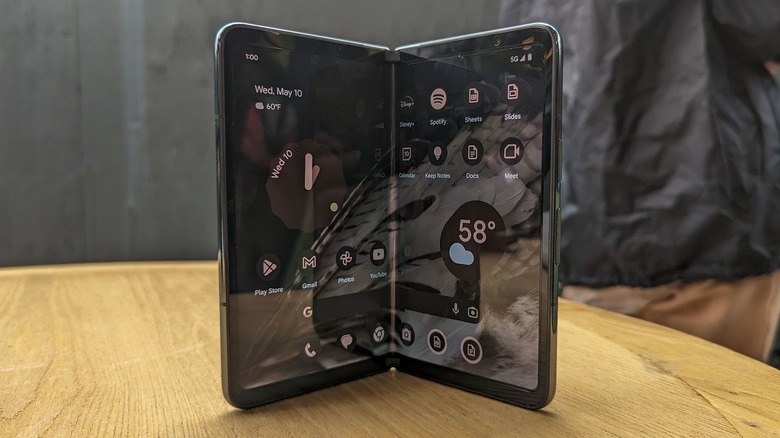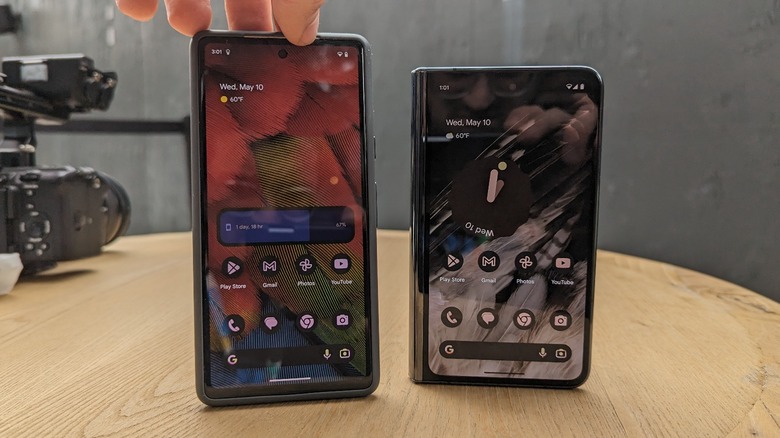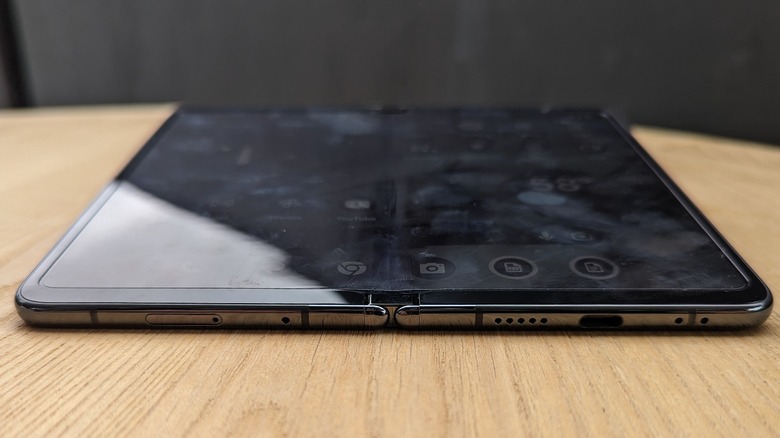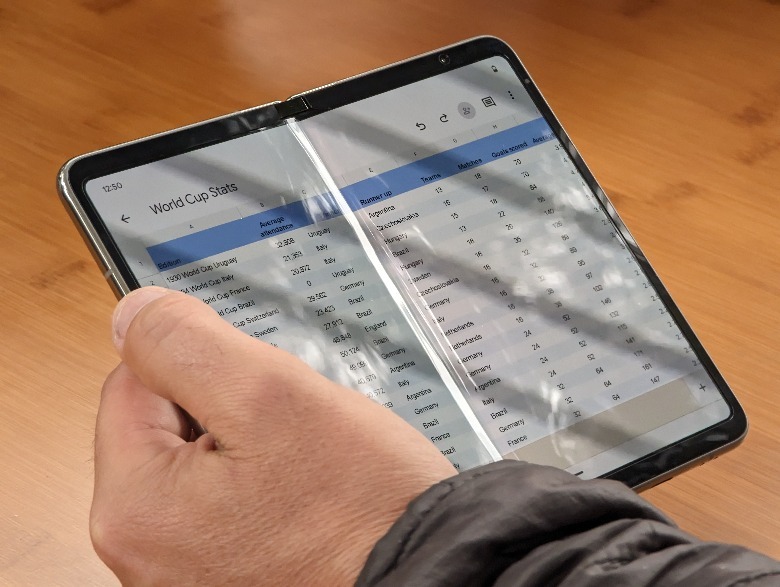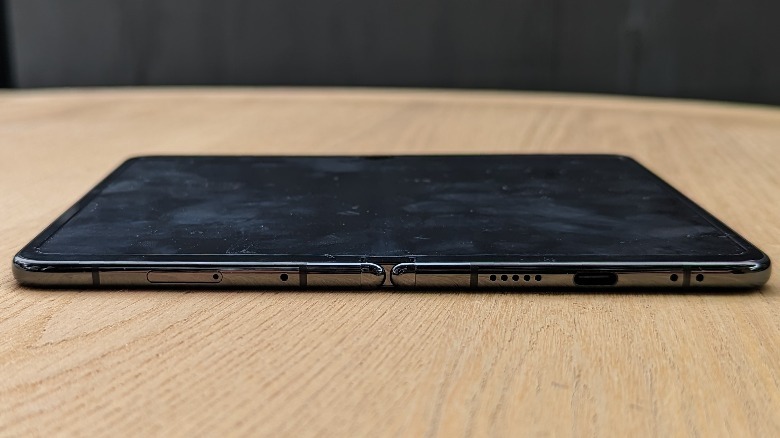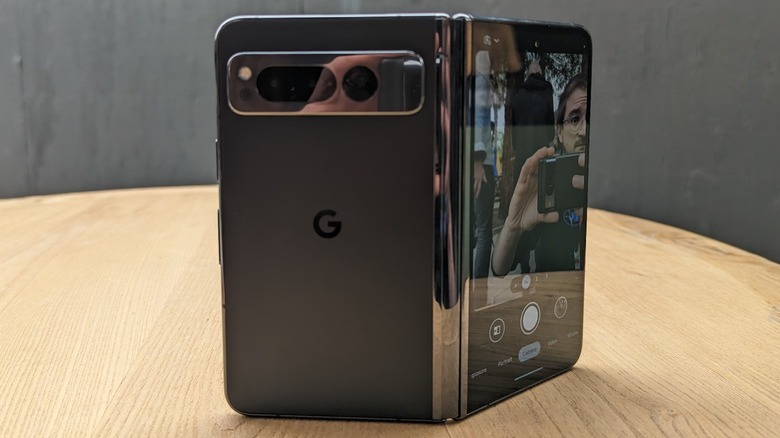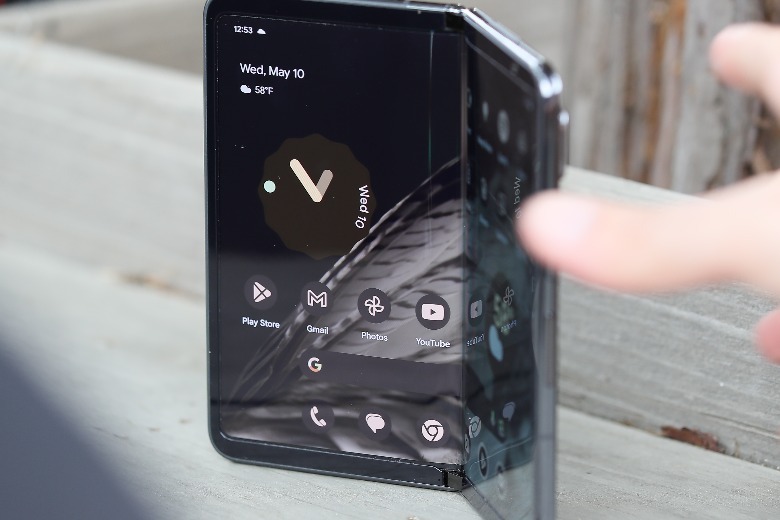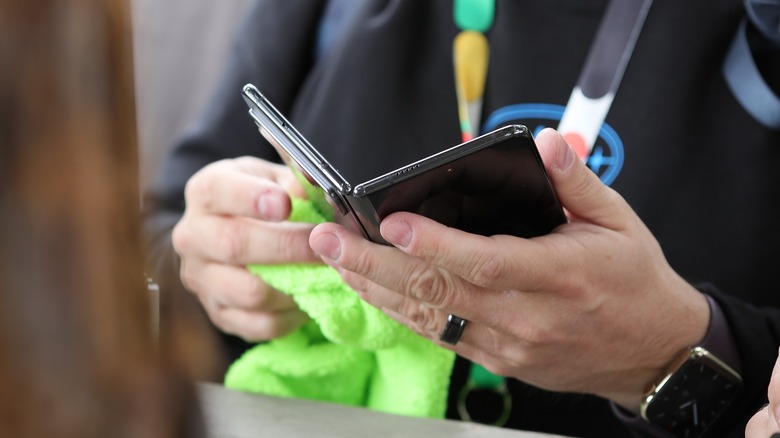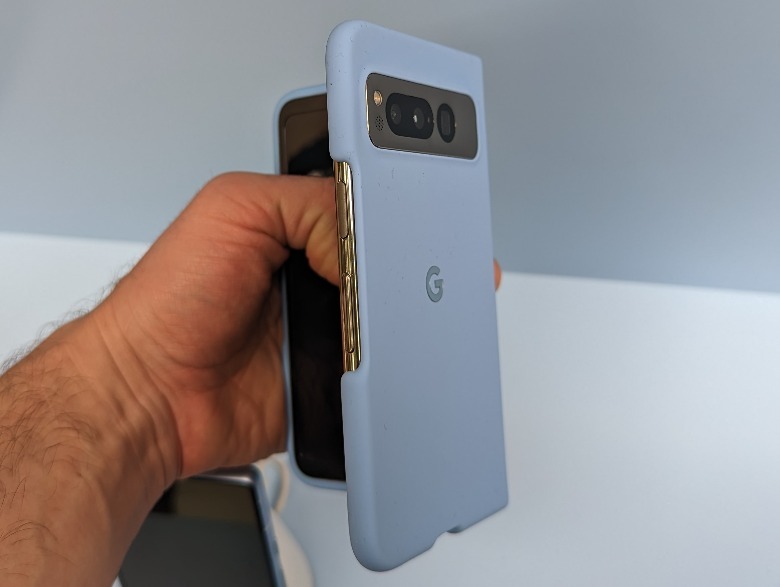Google Pixel Fold Hands-On: The Good, The Bad, And The Creased
The Google Pixel Fold is an interesting piece of hardware, and not necessarily entirely in a good way. We've been waiting for Google to release a foldable device for a few years now — ever since it revealed that it was working on tuning bits of Android to work specifically with this emerging new sort of hardware. Now that the device is here, it's not clear that Google's first mobile foldable display-toting device was kept in the oven long enough.
In May 2021, the Google device codenamed "Passport" was leaked — right around the same time Google released some new foldable software tools for Android at that year's Google I/O. Not much other than the name was leaked at that time, but given the size of a standard official government passport and the previously-revealed work Google had done on Android's foldable future, the dots seemed to connect.
Now here in May 2023, Google's revealed that it has a foldable Pixel phone and that it is prepared to release it soon very soon. Today we got to get our hands on the Google Pixel Fold for the first time.
Folded closed
The Pixel Fold looks and feels every bit the high-quality Pixel smartphone we've come to expect from Google when it's folded closed. On the outside, you've got what could be used as a standard flat smartphone with a high-powered set of cameras on its back. It has a slightly stout-looking 5.8-inch panel on its front, with an aspect ratio of 17.4:9. It is bright, sharp, and colorful.
Next to the Google Pixel 7a (also revealed for the first time this week), it's clear how similar — but significantly different in a few key ways — the Pixel Fold is, so long as it's folded. If we're only looking at the devices from this perspective, it's difficult to see why one would have a price many times that of the other.
Then again, in many ways that plays to the Pixel Fold's advantage. Being able to use the smartphone when closed means one-handed tasks are easier than on, say, the cover display of Samsung's taller, thinner Galaxy Z Fold 4. While Samsung's external screen is certainly usable, it's a far better experience when the handset is opened up. Google's foldable, in contrast, feels far more user-friendly — and akin to a regular smartphone, though obviously thicker — when it's shut.
Unfolded and open
Once this smartphone is unfolded, things get a little less predictable. When it came time to get up close and personal with some of the first foldable and rollable display panels ever to be (eventually) released for sale with the Royole FlexPai, a certain degree of leeway was given to the impressive-but-iffy hardware. It all felt a bit loose — very thin, almost floppy — like it was only ever meant to be a prototype.
The Google Pixel Fold doesn't feel like a prototype, necessarily, but it also doesn't feel like a device that should warrant the price tag it's been given, at least not today. The display quality, were it flat and not folding, seems as though it'd be up to Pixel standards.
But once the Pixel Fold is opened, fully, its display panel doesn't seem to sit entirely flat. The hinge mechanism is flush, but it doesn't seem to quite get all the way open. It could be that this is a trick of the eye, perhaps because of the way the protective top layer is situated, or indeed that we're not seeing the ready-for-sale final product here. Still, every indication we've been given by Google is that we're looking at a market-ready product, albeit a month before consumer handsets arrive.
Android foldable software
The Pixel Fold — as we're seeing it now — is running Android 13. By the time Android 14 is ready for prime time, this foldable will likely be among the first to run it. But for now, Android 13 is running quite well — this part of the software-hardware equation is highly decent. Google's clearly been spending the last few years working on bringing native Android up to speed for devices with multiple screens and screen aspect-ratios.
The transition from a single exterior display to unfolded display inside is nice — it feels well-considered and impressively robust. There's an animated wallpaper in the demo units that includes a pair of wings that unfold and flap around, depending on the degree the device is opened. That's a nice touch.
Even though the demo devices didn't include every feature outlined by Google on stage at Google I/O, this foldable device seems ready for action — on the software side, anyway.
Wrap-up
If the less-than-perfect flatness of the foldable display panel doesn't bother you, the Pixel Fold is every bit as exciting as Google's made it seem. There's a lot to like about this device, even here before it's running Android 14 and the many features Google has promised already about the upcoming version of its OS.
Whether it's worth the full asking price Google outlined is still up for debate. We'll need to get a bit more time with the retail version of the Pixel Fold before we're able to really, truly give it a wallet-ready verdict. For now, the hypothetical battle between the Google Pixel Fold and Samsung's Galaxy Z Fold 4 has begun to unfurl, and though Google's handset may be far newer, it doesn't instantly outclass Samsung's competition on any one, single metric.
The Goole Pixel Fold is available for pre-order now for $1,799. It'll be available with Google brand protective cases that look and feel very similar to what's offered with the rest of the Pixel line, too, when it's released on June 27, 2023.
